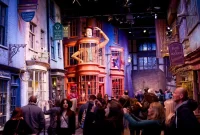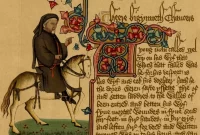Greenwich, known for its rich maritime history and famous Prime Meridian, is a captivating destination that holds a treasure trove of stories. From being a center of global navigation to housing historic ships and fascinating museums, Greenwich offers a unique blend of culture, history, and breathtaking views of the River Thames.
Exploring the Royal Observatory
Welcome to the Royal Observatory, a historic landmark located in Greenwich, London. This iconic institution is not only a fascinating attraction but also holds great significance in the maritime history and the establishment of the Prime Meridian.
The Royal Observatory has a rich history closely tied to both astronomy and navigation. It was founded in 1675 by King Charles II, making it one of the oldest scientific institutions in the world. Since its establishment, it served as the center for studying the stars, calculating precise positions and times, and supporting worldwide navigation.
The Prime Meridian:
A visit to the Royal Observatory allows you to stand at the very place where the Prime Meridian passes. This imaginary line marks 0 degrees longitude and is of great significance in dividing the Earth into Eastern and Western Hemispheres. Don’t miss the opportunity to have one foot in the Eastern Hemisphere and the other in the Western Hemisphere!
Attractions and Exhibitions:
Aside from its historical importance, the Royal Observatory offers a range of attractions and exhibitions that engage visitors of all ages. Explore the Telescope Dome, where you can see historic instruments and learn about breakthroughs in astronomy. Visit the Meridian Courtyard to admire the iconic Octagon Room and the famous red Time Ball that drops daily at 1 p.m.
The Peter Harrison Planetarium:
Make sure to visit the state-of-the-art Peter Harrison Planetarium during your visit. Here, you can experience captivating shows that take you on immersive journeys through the cosmos, making it a memorable and educational experience for both children and adults.
Plan Your Visit:
The Royal Observatory is open year-round, offering visitors the chance to delve into the fascinating world of astronomy and maritime history. To plan your visit and find more details about opening hours, ticket prices, and special events, be sure to check the official website.
The Cutty Sark: A Timeless Icon
The Cutty Sark, located in Greenwich, London, is a true symbol of maritime history and an iconic landmark. Built in 1869, it is the last surviving tea clipper, representing the golden era of trade and commerce between Britain and the rest of the world.
This magnificent vessel played a crucial role in the China tea trade and set records for its speed and endurance. Its streamlined design and innovative technology made it a pioneer of its time and a true engineering marvel.
Today, the Cutty Sark stands proudly as a museum and tourist attraction, allowing visitors to step back in time and immerse themselves in the rich maritime heritage of Greenwich. The ship has been meticulously restored to its former glory, with interactive exhibits and fascinating displays showcasing its history.
Visitors can explore the ship’s various decks, admire its elegant rigging, and even get a glimpse of its original cargo hold. The museum also provides insights into the lives of the sailors who manned the ship and the challenges they faced during their voyages.
In addition to its historical significance, the Cutty Sark is also closely linked to the Prime Meridian. Greenwich, the home of this magnificent ship, is the very place where the Prime Meridian and Greenwich Mean Time (GMT) are determined. It is a site of utmost importance in the world of navigation and timekeeping.
Whether you are a history enthusiast, a maritime lover, or simply someone seeking a unique experience, a visit to the Cutty Sark is a must. Here, you can discover the captivating stories behind this timeless icon and gain an understanding of its lasting legacy.
Discovering the History of GMT
In the article “Greenwich: Maritime History and the Prime Meridian,” we delve into the fascinating history of Greenwich Mean Time (GMT) and its significance in global timekeeping.
Greenwich, a district located in southeast London, England, has long been associated with maritime exploration and scientific advancements. One of the most important contributions it made to the world is the establishment of GMT, which has become the standard for timekeeping internationally.
The concept of GMT was first developed by astronomers in the 17th century to solve the problem of determining longitude accurately at sea. Observatories, such as the Royal Observatory Greenwich, played a crucial role in this endeavor by using celestial measurements to establish a reference point for time.
By the late 19th century, GMT became the foundation for the global time system. The Prime Meridian, located at the Royal Observatory in Greenwich, was designated as the starting point for measuring longitude and the reference for all time zones.
This development in timekeeping revolutionized various aspects of human life, including transportation, telecommunications, and international trade. It allowed for precise scheduling and coordination across different regions, making global interactions more efficient and reliable.
Today, GMT remains a vital part of our daily lives, even in the digital age. It serves as a cornerstone for determining time zones, facilitating global communications, and upholding the synchronization of activities worldwide.
Conclusion
In conclusion, Greenwich holds a significant place in maritime history and is widely known for being the home of the Prime Meridian. Its rich heritage, including the National Maritime Museum and the Royal Observatory, makes it a must-visit destination for history enthusiasts and those interested in exploring the origins of timekeeping and navigation. From the Cutty Sark to the stunning views of London from Greenwich Park, this historic district offers a unique blend of culture, education, and natural beauty.




